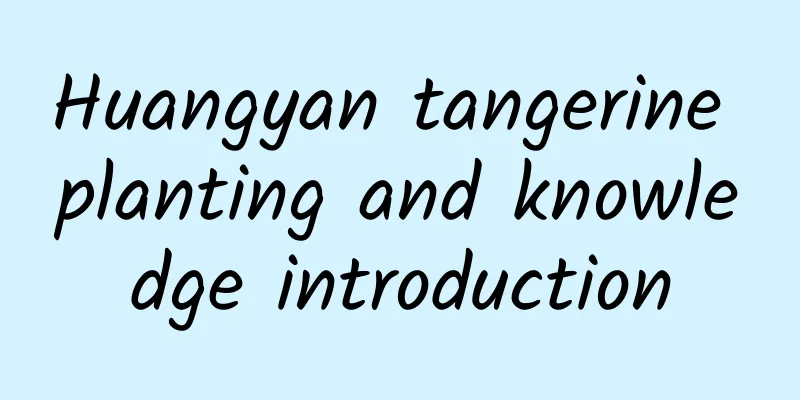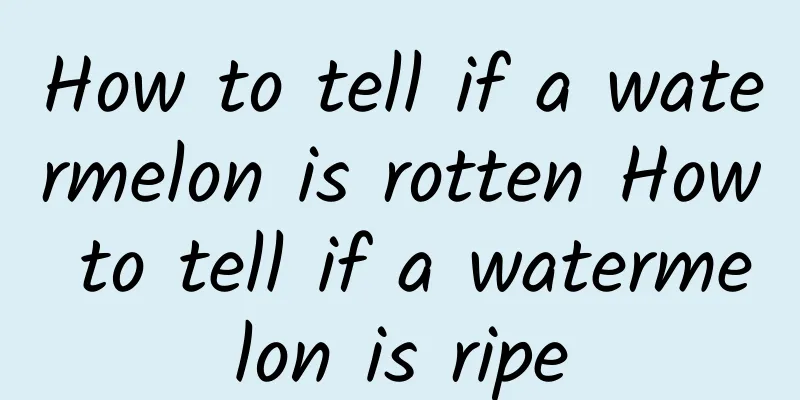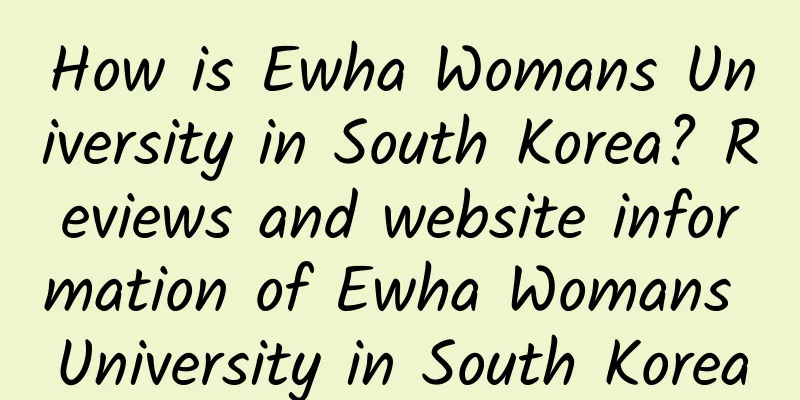Huangyan tangerine planting and knowledge introduction

|
Introduction to Mandarin Orange Citrus is the most important fruit tree species in southern my country, with longevity, high yield and stable production, and high economic benefits. It plays a major role in helping fruit farmers get rid of poverty and become rich, and in the development of rural economy. Mandarin orange is a kind of citrus (tangerine), and it tastes very sweet, hence the name. The main components of mandarin orange are water, protein, fat, carbohydrates, calories, crude fiber, ash, calcium, phosphorus, iron, vitamins, carotene, thiamine, riboflavin, niacin, ascorbic acid, potassium, sodium, magnesium, etc. Eating mandarin orange regularly can improve the detoxification function of the liver, accelerate cholesterol conversion, and prevent arteriosclerosis. Citrus fruits are mainly distributed in the area south of 35°N. They like warm and humid climates. They can be pushed northward to 45°N in areas with large water bodies. There are 135 countries producing citrus fruits in the world, with an annual output of 102.822 million tons and an area of 107.3 million mu, both ranking first among the fruits. Brazil ranks first with 24.2526 million tons, the United States ranks second with 16.3352 million tons, and China ranks third with 10.78 million tons. China is one of the important origins of citrus, with rich citrus resources and a wide variety of fine varieties, and a cultivation history of more than 4,000 years. As early as the Xia Dynasty (21st century BC-17th century BC), citrus produced in Jiangsu, Anhui, Jiangxi, Hunan, Hubei and other places in China were listed as tribute. After long-term cultivation and selection, citrus has become a precious fruit for mankind. According to research, it was not until 1471 AD that citrus trees such as tangerines, mandarins, and oranges were introduced from my country to Lisbon, Portugal, and in 1665 AD to Florida, the United States. Huangyan Mandarin OrangeIn China, Huangyan, Taizhou City, Zhejiang Province is the hometown of tangerines. Huangyan is known as the ancestral place of the world's wide-skinned tangerines, and Huangyan mandarin oranges have a planting history of more than 2,300 years. At present, Huangyan has more than 180 citrus varieties, making it the production area with the most citrus varieties in the country. Among them, the local Zao and Miyauchi Iyo won the gold medal at the China Agricultural Expo, and it has the reputation of "China's Mandarin Orange Hometown". Huangyan mandarin oranges not only have excellent qualities of being refreshing, sweet, delicious, and fragrant, but also have a very wide planting range in Huangyan. According to relevant documents in 1932, the Huangyan tangerine area "from the mouth of the river in the east, along the Yongning River, Xijiang River, Nanguan River, Dongguan River and its tributaries, all have orange gardens." Before the Anti-Japanese War, the cultivation area of Huangyan County was about 20,000 mu. Since 1937, the serious harassment of the coastal areas by the invasion of Japanese imperialism has brought disaster to Huangyan citrus. In 1946, the citrus production returned to a good level before the war, reaching 385,000 dan. On the eve of liberation, the citrus cultivation area of Huangyan County was about 22,000 mu. After liberation, the Party and the government attached great importance to the recovery and development of citrus production, formulated a series of policies, and adopted powerful measures. In 1951, the China Native Products Company established a citrus purchasing station in Huangyan to open up the sales of citrus. In 1952, 68,614 dan of citrus were exported to the Soviet Union for the first time, opening up the international market. In order to strengthen the research and management of citrus production, with the support of the Provincial Department of Agriculture and Forestry, Huangyan established the County Citrus Guidance Institute and the County Citrus Administrative Authority - Special Products Section (later changed to Special Products Bureau and Forestry Bureau). Since then, Huangyan citrus has opened a new page in history. In terms of planting area, in 1952, according to the central government's call for "planting fruit trees on the mountain, not competing with grain and cotton for land", a mountain citrus experimental station was established in Toudao. In 1954, a pilot project of planting citrus on the mountain was carried out in Ningxi. In 1955, multiple demonstrations were carried out, and a model of planting citrus in the mountains was established, overcoming the traditional concept of "planting citrus is not beyond the mountain top boat". In 1957, the experiment of planting citrus on the seashore was successful in Jinqing Mechanical Farm. From then on, a broad path for the development of citrus in mountainous areas and coastal areas was opened up. From the western mountain area to the eastern seashore, there are citrus groves everywhere, becoming a veritable citrus town. In terms of quantity, the total output of Huangyan citrus in 1949 was 273,800 dan, and in 1952 it exceeded the highest level before liberation, reaching 478,000 dan. After that, the output continued to rise, breaking through the 1 million dan mark in 1962, and crossing 1.2 million dan in 1985, ranking first in the country. In 1986, it reached 1.2515 million dan, equivalent to 4.57 times the output in 1949 at the beginning of liberation. This year's output ranked second in the country, second only to Dongguan City, Guangdong Province. At present, the planting area of Huangyan citrus has reached 87,000 mu, with an annual output of more than 130,000 tons and an output value of more than 200 million yuan. In terms of quality, citrus varieties have been gradually improved. Over the past fifty years, through the joint efforts of scientific and technological workers and orange farmers, a number of low-grade varieties have been eliminated through resource surveys, seed selection, introduction and breeding, and high-grafting and replacement, and Huangyan's characteristic varieties have been actively developed, including local early and early-maturing Wenzhou mandarin oranges, navel oranges, Miyauchi Iyo oranges and other excellent varieties. In the 1990s, modern science and technology were widely used in citrus production, bringing a new leap in the quality of oranges. In 1993, at the Provincial High-quality Agricultural Products Fair, Diwan Zao won the title of "the best-selling fruit"; in 1994, Diwan Zao and Miyonai Iyokan fresh fruits won the first prize in the provincial evaluation; in 1995, Diwan Zao and Miyonai Iyokan both won the gold medal at the Second China Agricultural Expo; in 1996, Huangyan won the honor of "China's Hometown of Honey Tangerines"; in 1997, Diwan Zao was recognized as a Chinese famous brand product at the Third National Agricultural Expo; in 1999, Huangyan Diwan Zao was recognized as a famous brand product at the China International Agricultural Expo, and Huangyan was listed as a high-quality citrus production base county of the Ministry of Agriculture; in June 2000, the "Huangyan Honey Tangerine" certification trademark was approved for registration, and the "Huangyan Honey Tangerine" brand was gradually established. |
>>: Will eating tangerines cause you to get irritated?
Recommend
The efficacy and function of pig's feet ginger. Can pig's feet ginger supplement calcium?
Have you ever eaten pig's feet with ginger? I...
How is Kiplinger? Kiplinger review and website information
What is Kiplinger's? Kiplinger's is a well...
Nutritional value and efficacy of taro
Taro is a tuberous plant. Its tubers are edible, ...
Family mushroom cultivation technology
If we want to grow some shiitake mushrooms in our...
The difference between pomelo and grapefruit and the benefits of eating grapefruit
Grapefruit is a fruit that is available in large ...
Heart-saving vegetable pictures and their effects and functions
Jiuxincai, also known as Feicai, is a hybrid of a...
How to do fire cupping and who needs blood cupping
Cupping is a common health-preserving method in C...
How to pickle sugar garlic
How to pickle sugar garlic? Pickling sugar garlic ...
Can I eat grapefruit during pregnancy? What are the advantages and disadvantages of eating grapefruit during pregnancy?
Grapefruit tastes sweet and sour and is slightly ...
How to make homemade mayonnaise Ingredients and steps for making homemade mayonnaise
If you want to make your own mayonnaise, it is be...
How is Vietnam Post and Telecommunications Group? Vietnam Post and Telecommunications Group Reviews and Website Information
What is Vietnam Posts and Telecommunications Group...
Celery porridge ingredients and steps of preparation Celery porridge nutritional value
Health-preserving porridge has always been popula...
How to prune the quince and how to pinch the tips of the quince
Many people like to cultivate Quisqualis, a green...
How to make water chestnut porridge? Homemade water chestnut porridge recipes
Water chestnut is a kind of food material with st...
How to prune a cherry tree? Things to note when pruning a cherry tree
When the cherry tree grows to a certain size, you...









